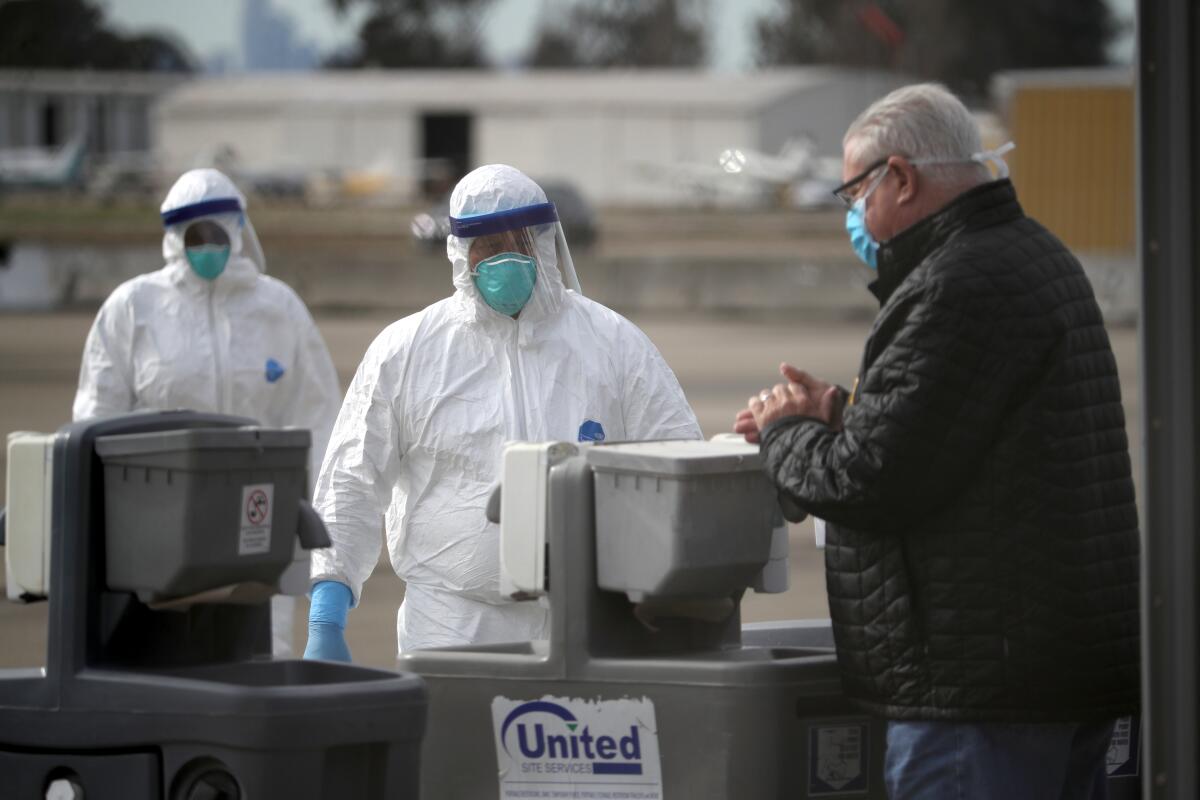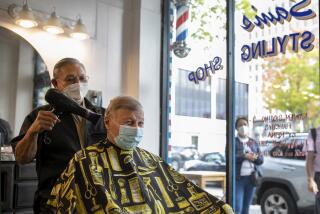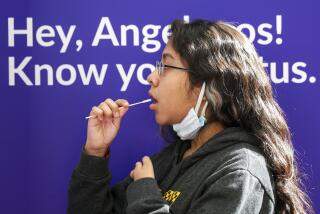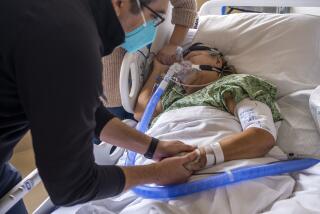Editorial: Stay home, be safe: A coronavirus pandemic demands we all submit to extreme precautions

- Share via
Travel to and from the U.S. has been curtailed. Major sports leagues have suspended their games. Conferences and concerts have been shut down, and in some places large gatherings have been banned outright. Disneyland is closed for the foreseeable future. Universities have sent students home and moved classes online. Employers have asked their workers to stay out of the office, and government offices have closed to the public. People have been cautioned to remain 6 feet away from each other. The U.S. economy has gone from solid to suspect almost overnight.
Normal life has been upended, and will remain so for the foreseeable future, as the United States struggles to get ahead of the novel coronavirus pandemic. It’s going to be difficult, disruptive and costly in ways we have yet to imagine. And while the extraordinary measures taken by large employers, colleges and professional sports leagues, Disney and others may seem extreme to those in areas with few or no reported cases, they are in fact rational. The reality is that that the nation is still unprepared for the spread of a microbe we don’t fully understand.
True, only 1,323 cases of COVID-19 and 38 deaths from the disease had been reported in the U.S. as of Thursday. But public health experts believe that the true infection rate is orders of magnitude greater than has been reported because of the shortage of diagnostic tests.
Just to give one stark example of the testing inadequacy: California — a state with nearly 40 million people, 198 confirmed COVID-19 cases and documented community transmission — had conducted only 1,573 tests as of Thursday. It’s staggering to imagine how far and wide the infection may have spread undetected.
Public health officials believe the battle to contain the novel coronavirus has been lost and the strategy now must be to slow the rate of infections — to flatten out the curve, in public-health speak — so that a surge of cases doesn’t overwhelm healthcare systems. Doing so could buy time until flu season has ended, which will free more capacity in the system to respond to COVID-19, and until new medicines to treat sick people become available.
To get a clear idea of why delaying the spread of COVID-19 cases is so important, we need only to consider what’s happening in Italy at the moment. In just a few weeks, that country’s infection rate exploded from a few cases to thousands. Now the entire country is in quarantine, and the Italian healthcare system is stressed nearly to the breaking point.
Avoiding that fate is going to require considerable cooperation, preparation and patience — though not panic. More than ever, we wish we had a president equal to the challenge of competently and rationally guiding the nation through a crisis. We do not, however, and President Trump’s Wednesday night address to the nation illustrated once again his penchant for missing the point, misstating facts and blaming others. He continued to underplay the seriousness of the outbreak while at the same time failing to comfort or to calm Americans. He sparked fears both among public health experts and among Wall Street investors, who sent stock tumbling Thursday in their worst day since 1987. The leadership vacuum makes it all the more essential that state and local officials step up to make the difficult but essential decisions needed now to protect their communities in the days ahead.
And many have done so. In California, state and local officials have for the most part taken appropriately cautious measures to limit public events and encourage changes in behavior to reduce contagion, while not overreacting with massive closures. So far, elected officials haven’t recommended that people hole themselves up at home, aside from those who are sick or at higher risk for contracting COVID-19. Nor have they ordered schools or businesses shut down. We hope it won’t come to that. If COVID-19 is contained soon, the wholesale shuttering of commerce and society could do more long-term harm than the virus itself.
But there are numerous things that businesses and schools can do now to make more drastic steps unnecessary, and many already have done so voluntarily. For example, schools can limit assemblies and regularly sanitize their facilities. And businesses can allow employees, where feasible, to do their work from home. Not everyone can do their jobs remotely, but limiting the number of people coming into a centralized location reduces the opportunities for infection to spread, and that makes everyone safer.
We hope that a year from now we look back on this moment as the point at which the U.S. got the upper hand in the coronavirus outbreak. But for now, it seems wise to plan for the long haul — for more infections, more cancellations, more social distancing, and more bad economic news — and to respond by changing our lives cautiously, calmly and responsibly.
More to Read
A cure for the common opinion
Get thought-provoking perspectives with our weekly newsletter.
You may occasionally receive promotional content from the Los Angeles Times.










